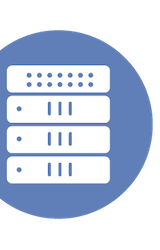Tech Field Day Coverage
Our delegate panel includes independent writers and thought leaders, and we collect their coverage of the event, Tech Field Day presentations, and sponsoring companies here.
Storage Field Day 12 – Wrap-up and Link-o-rama
Dan Frith has done extensive writing about all the presenters and happenings at Storage Field Day earlier this month. He’s compiled a list of all of the posts for easy reference. Make sure to check them all out for Dan’s usual excellent analysis and commentary.
Read More:
Storage Field Day 12 – Wrap-up and Link-o-rama
Netapp – an #SFD12 Update
When a company with NetApp’s extensive history and portfolio presents at Storage Field Day, sometimes you don’t know what to expect. Matt Leib certainly found a lot to like from their presentation earlier this month. He got a glimpse into how the company is proceeding in light of the SolidFire acquisition, and remained impressed by their approach. The company has managed to integrate the company without quashing its consistent innovation, always a challenge for a large company like NetApp. Matt saw this innovative spirit actually flowing back into some of NetApp’s new and updated solutions.
Read More:
Privileged to be invited to NFD15
This will be Brandon Carroll’s tenth Networking Field Day, and he’s excited. He’s looking forward to hearing more from Gigamon, IP Infusion, TELoIP, and VMware, along with catching up with other delegates, and meeting new faces. Make sure to watch along with Brandon on the live stream, and join in the conversation on Twitter using #NFD15.
Read More:
Privileged to be invited to NFD15
SNIA Know What Time It Is
Dan Frith looks at what SNIA presented at Storage Field Day earlier this month. He found it an intriguing presentations, detailing the world of storage in the hyperscaler world. He makes the case for why SNIA has carved themselves out as a valuable asset and standards body in the enterprise storage world.
Read More:
Chat with @RebeccaFitzhugh at #TFD13
Alastair Cooke took a break at Networking Field Day to have a chat with Rebecca Fitzhugh. They talk about the role of mentorship in career development within enterprise IT. It’s a brief but thoughtful discussion, make sure to check it out.
Read More:
Chat with @RebeccaFitzhugh at #TFD13
IP Infusion: Network Field Day 15 Preview
Keith Townsend looks ahead to Networking Field Day next month, giving a look at IP Infusion. He’s excited to hear more from the company, mainly because he couldn’t find out a lot about them from his research. They offer a networking operating system solution, and Keith wants to know how they’ll differentiate themselves in the market. He can’t wait to hear more and get a technical deep dive.
Read More:
IP Infusion: Network Field Day 15 Preview
TELoIP at Networking Field Day 15
TELoIP presents at Networking Field Day next week. Phil Gervasi will be watching their presentation closely, as he has a keen interest in the SD-WAN market. He’s interested to see how they will differentiate themselves in an increasingly clouded marketing with their managed WAN solution and cloud infrastructure. Make sure to check out the live stream to watch it along with Phil!
Read More:
TELoIP at Networking Field Day 15
Datera – Hybrid Is The New Black
Dan Frith wrote up his impressions of Datera’s presentation from Storage Field Day earlier this month. He reviews how the company has progressed in their aim to provide a self-optimizing invisible cloud infrastructure, highlighting their already excellent policy driven autonomous feature. New to this presentation, they are now focusing on delivering the experience while maintaining high performance and lower latencies. Dan further looks at how Datera is able to do this in a hybrid cloud environment.
Read More:
Datera – Hybrid Is The New Black
Cisco and Apple Agree: QoS Marking Is an Application Problem
Cisco and Apple announced the first fruits of their partnership at Cisco Live Europe. Ivan Pepelnjak wrote up his thoughts on the announcements. Overall, he was delighted to find that the two companies are letting admins bring QoS to apps on Cisco networks. He runs through some of the potential problems in the solution, but overall finds it well thought out.
Read More:
Cisco and Apple Agree: QoS Marking Is an Application Problem
There’s A Whole Lot More To StarWind Than Free Stuff
StarWind presented at Storage Field Day earlier this month in Silicon Valley. Dan Frith thought they made a compelling case for their storage appliance in the 20 – 40TB hybrid or all-flash space, where high performance is needed cost effectively. Though the HCI space is crowded, he thinks StarWind can differentiate on broad protocol support and practical management features.
Read More:
There’s A Whole Lot More To StarWind Than Free Stuff
Ah… NSX, We Meet Again.
Keith Townsend is heading to his first Networking Field Day next month, and he’s started to preview the presenting companies. First up is VMware with their NSX platform. Keith is familiar with it, but wants to hear more about NSX and micro-segmentation, specifically what VMware has learned from customers is how they go from the passive listening phase of looking at traffic to finally taking action against suspicious behavior. He’s also interested in seeing how serverless and NSX-T work together. He’ll get his fill at Networking Field Day, make sure to check out the live stream to watch along with Keith and the other delegates.
Read More:
StarWind Gives You a Gateway to the Cloud
Rich Stroffolino reviews what he saw from StarWind at Storage Field Day. He particularly looks at their “cloud gateway” hardware, that lets you have addressable cloud storage via a standard SATA interface. It’s an interesting bridge device that could be used to replace spinning disks for cold data.
Read More:
StarWind Gives You a Gateway to the Cloud - Gestalt IT
Storage Field Day 12 – Day 3 Recap | The Partly Cloudy Blog
Adam Bergh went to first Storage Field Day this month. He wrote up a post outlining the presentations he saw at the last day of the event. SNIA and Intel gave Adam a lot of food for thought. SNIA gave an overview of its role in the industry, as well as reviewing the development of hyperscaler storage. Intel reviewed developments with its Storage Performance Development Kit and Resource Director Technology.
Read More:
Storage Field Day 12 – Day 3 Recap | The Partly Cloudy Blog
Storage Field Day 12 – Day 2 Recap
Adam Bergh went to first first Storage Field Day this month. In this post, he gives some of his thoughts from day two of the event. He heard presentations from Nimble Storage, NetApp, and Datera.
Read More:
Storage Field Day 12 – Day 2 Recap
Tech Field Day Gets Containerized at DockerCon and Cloud Field Day
Rich Stroffolino is excited for Tech Field Day Extra from DockerCon. This event will be in partnership with Docker, and feature presentation from them and other companies in their ecosystem. Make sure to mark your calendar for April 17th!
Read More:
Tech Field Day Gets Containerized at DockerCon and Cloud Field Day
Intel Optane Enters the Market
Rich Stroffolino gives his thoughts on Intel’s release of their first commercial 3D XPoint product, the Optane P4800X. He situates where its initial $1500+ price tag puts it within the world of new storage technology, what the new tech should be good for in the data center, and similarities to existing storage-as-memory products.
Read More:
Intel Optane Enters the Market - Gestalt IT
The Rise of the Machine Learning Solutions
Shaun Neal published a piece with his thoughts on what he saw from Aruba Atmosphere 2017. He focuses in on their Niara solution which solves some of the issues that arise when managing network access via policy. He lays out three uses cases for it, how the solution works for stolen identities, malware, and software bugs. He thinks that with Niara, Aruba puts themselves near the forefront of adding in machine learning to enterprise management.
Read More:
The Rise of the Machine Learning Solutions
Intel SPDK and NVMe-oF will accelerate NVMe adoption rates
Intel’s presentation from Storage Field Day this month certainly made an impression on the delegates. Jon Klaus wrote up his thoughts. He goes into particular details over SPDK and NVMe over Fabrics, both of which he thinks will have genuine business impacts for overall NVMe adoption. For Jon, this is an example of Intel pushing software to truly catch up to recent advances in hardware.
Read More:
Intel SPDK and NVMe-oF will accelerate NVMe adoption rates
Scale-Out Doesn’t Just Mean Applications
Alex Galbraith reflects on what he saw from Rubrik at Tech Field Day in November. He thinks their approach to backups is an example of the new paradigm of enterprise IT. It’s natively a scale-out solution, not a legacy scale-up solution that has artificial limits and has to have scale tacked on as business grows. This is something of the consumerization of IT, Rubrik’s backup solution just works and scales to your needs, allowing you to rely on it more and worry about it less.
Read More:
Scale-Out Doesn't Just Mean Applications
Intel Are Putting Technology To Good Use
Intel’s Storage Performance Development Kit made quite an impression on the Storage Field Day delegates. Dan Frith is no exception. He’s written up his thoughts on how it impact the emerging NVMe storage space. SPDK is able to offer much lower latency and better scaling IOPS than the standard Linux kernel, mainly by replacing its kernel-based interrupt-driven driver. This centers storage CPU needs on dedicated cores, and frees up overall system resources. In use cases, early customers have seen a roughly 300% improvement in latency and IOPS. The presentation left Dan “mighty excited”!
Read More:







